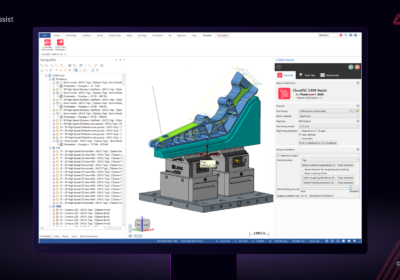Global expansion brings an array of opportunities for businesses, such as being to establish within new markets and increase revenue. However, it also comes with an array of cross-border challenges, particularly from ecommerce perspective. One such challenge is online payments.
Each country has its own preference for payment methods and being able to successfully integrate them can be the make or break of an international expansion mission. 451Nexus had released a report that flagged poor payment mixes had led to merchants losing over £16.6 billion ($20.1 billion) in revenue in 2021.
Thus, its key to optimise your payment stack and embrace payment method trends.
Why is it important to optimise your payment stack?
Being a key part of the customer’s journey and improving your conversion rates significantly, the payment stage of the journey is important to develop an understanding around, as well as being able to respect each market’s payment trends. This will help you adapt and get on the good side of your new potential customers, that will lead to increased revenue.
If you add new payment methods to your mix, this will allow you to reach new pools of consumers you may not have necessarily had access to previously.
One thing to note with cross-border ecommerce and the extension of payment methods, is the increase risk of fraud opportunities. Using data and the knowledge of a rich commerce network will help you detect fraudulent orders and approve more good ones. Partnering with a third-party provider can introduce you to machine-learning and order automation to take the toll off manual order review and assist you on your cross-border expansion journey, all while optimising your revenue.
E Wallets are overtaking credit cards in North America
Whilst credit cards are the most preferred method within the US as of 2021, e-wallets have become another major player to have entered the scene. As the digital-first buyer is headlining the ecommerce landscape in the US, e-wallets are gaining momentum. By 2025, they are expected to exceed credit cards in popularity, rising from 38.2% in 2020 to 53.2%.
In Canada, things are looking similar. While credit cards are the dominant force with a share of 50% in 2021, digital wallets follow them with a 22% share and are expected to increase as a result of the current ecommerce revolution.
Europe’s adopting a more dispersed approach to payment methods
Digital wallets have become a dominant method of payment, the likes of PayPal and Alipay have been used by 42% of shoppers. Other preferred payment methods include Visa and Mastercard (35% of buyers) followed by domestic bank credit and debit cards (24%).
However, there’s a certain divide of preferred payments throughout the different regions of Europe.
In Westen Europe for example, credit cards and debit cards are still predominately used, however there are some big differences amongst certain countries. In the Netherlands, for instance, the national payment method iDEAL was a top choice with 53% of the Dutch using it in 2020.
While in Eastern Europe countries, some like Slovakia are relying on traditional cash payments, at least, two-thirds of payments are handled this way.
China riding the digital revolution wave
Being at the forefront of digitised payments, China had recorded 72.1% of ecommerce purchases in 2021 being made via digital wallets.
Digital Wallets being utilised in China tend to be tied with the online platform running the cross-border ecommerce scene in the region, such as Alibaba’s Alipay and Tencent’s WeChat Pay. By the end of 2021, Tmall Global, an Alibaba-backed cross-border shopping platform, had over one-third of all B2C cross-border ecommerce retailers.

The reign of credit cards dominates Latin America
Credit cards are the dominant payment method in Latin America. In 2021, they comprised 39.3% of the value of transactions across all Latin American markets. In Mexico, 45% of transactions were made this way, while Brazil had a 44.7% of usage, followed by debit cards (18.2%).
However, digital wallets are an emerging trend in Mexico and gaining momentum. In 2021, they comprised a 27.7% share of all transactions. Some of the most popular e-wallets in the country are PayPal, Visa Checkout, Masterpass, and domestic player Mercado Pago.
If you develop a clear understanding of payments and their strategic place within your cross-border expansion, then this can increase your chances of your international expansion success. After that, it’s crucial to optimise your payments stack based on the market you’re expanding into to see good results.
Sources https://www.signifyd.com/wp-content/uploads/2022/02/451Nexus-Payments_in_the_new_roaring_twenties.pdf https://www.statista.com/study/42335/ecommerce-report/ https://www.statista.com/statistics/1230961/e-commerce-payment-methods-in-canada/ https://ecommercenews.eu/online-payment-methods-europe/#:~:text=When%20it%20comes%20to%20paying,bank%20credit%20and%20debit%20cards. https://www.statista.com/statistics/1183952/preferred-online-payment-methods-in-netherlands/ https://www.mergado.com/blog/slovak-e-commerce-overview-2020#:~:text=The%20most%20popular%20payment%20method%20in%20Slovakia%20is,the%20choice%20of%20a%20payment%20gateway%20is%20important. https://www.theasianbanker.com/updates-and-articles/worldpay/fis-report:-digital-wallet-is-future-of-e-commerce-market https://www.adchina.io/china-cross-border-ecommerce/ https://latinoamerica21.com/en/the-expansion-of-digital-methods-of-payment-consolidates-in-latin-america/#:~:text=Credit%20cards%20remain%20the%20main,in%20all%20Latin%20American%20markets. https://www.jpmorgan.com/merchant-services/insights/reports/mexico#:~:text=Mexico's%20e%2Dcommerce%20payments%20trend,worth%20%2410.2%20billion%20in%20sales.







